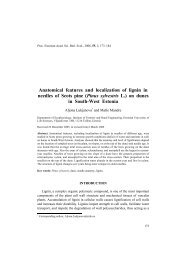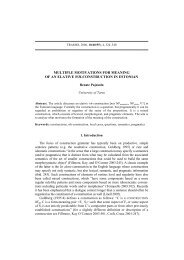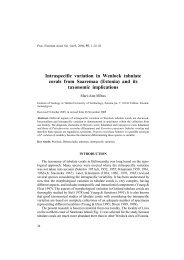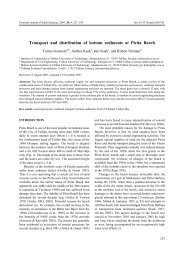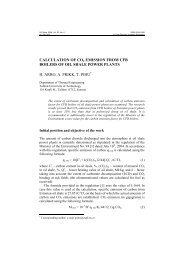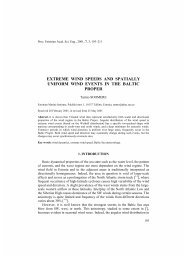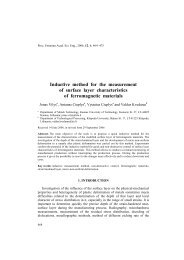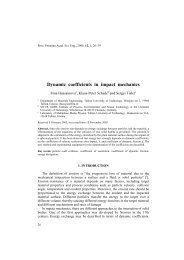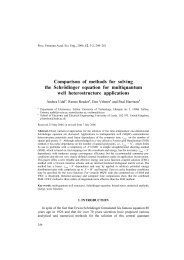Application of the Haar wavelet transform to solving integral and ...
Application of the Haar wavelet transform to solving integral and ...
Application of the Haar wavelet transform to solving integral and ...
You also want an ePaper? Increase the reach of your titles
YUMPU automatically turns print PDFs into web optimized ePapers that Google loves.
These results are discretized by replacing x → x l , t → t s+1 . To simplify<br />
<strong>the</strong> writing <strong>of</strong> <strong>the</strong> formulae, <strong>the</strong> matrix formulation is used <strong>and</strong> <strong>the</strong> notations<br />
∆t = t s+1 − t s , u(l, s) = u(x l , t s ) etc. are introduced. Taking in<strong>to</strong> account<br />
<strong>the</strong> initial conditions (40), Eqs (43) can be put in<strong>to</strong> <strong>the</strong> form<br />
˙u ′′ (l, s + 1) = ∆ta s (:)H(:, l) + ˙u ′′ (l, s),<br />
u ′′ (l, s + 1) = 1 2 ∆t2 a s (:)H(:, l) + u ′′ (l, s) + ∆t ˙u ′′ (l, s),<br />
ü(l, s + 1) = a s (:)P 2 (:, l) + ¨ϕ(s + 1) + x l ¨ψ(s + 1),<br />
˙u(l, s + 1) = ∆ta s (:)P 2 (:, l) + ˙u(s, l) + ˙ϕ(s + 1) − ˙ϕ(1)<br />
+x l [ ˙ψ(s + 1) − ˙ψ(s)],<br />
(44)<br />
u(l, s + 1) = 1 2 ∆t2 a s (:)P 2 (:, l) + u(l, s) + ∆t ˙u(l, s) + ϕ(s + 1)<br />
−ϕ(s) − ∆t ˙ϕ(s) + x l [ψ(s + 1) − ψ(s) − ∆t ˙ψ(s)].<br />
Inserting <strong>the</strong>se results in<strong>to</strong> (40), we get a linear matrix equation for calculating <strong>the</strong><br />
<strong>wavelet</strong> coefficients a s (:):<br />
a s (:)P 2 (:, l) = 1 L 2 u′′ (s, l) + sin u(s, l) − x l ¨ϕ(s + 1) − ¨ψ(s + 1). (45)<br />
Example 4. Computer simulation was carried out for t ∈ [10, 30], L = 20,<br />
β = 0.025. If we want <strong>to</strong> get <strong>the</strong> classical solitary wave solution, we must take<br />
f(x) = 4 arctan[exp(αx)],<br />
g(x) = αV (αx),<br />
ϕ(t) = 4 arctan[exp(−αβt)],<br />
ψ(t) = −αβV (−αβt),<br />
(46)<br />
where<br />
V (z) =<br />
4ez<br />
1 + e 2z .<br />
The accuracy <strong>of</strong> our approach is estimated by <strong>the</strong> error function<br />
v(t) = 1<br />
2M ‖u(x, t) − u ex(x, t)‖ = 1<br />
2M<br />
{ ∑<br />
2M [<br />
u(xi , t) − u ex (x i , t) ] } 2<br />
1/2<br />
. (47)<br />
The calculations show that <strong>the</strong> function v(t) increases mono<strong>to</strong>nically, <strong>the</strong>refore<br />
v(t max ) is taken as <strong>the</strong> error estimate. Some computer results are presented in<br />
Table 4 <strong>and</strong> Fig. 4.<br />
42<br />
i=1



